Dick Kelly
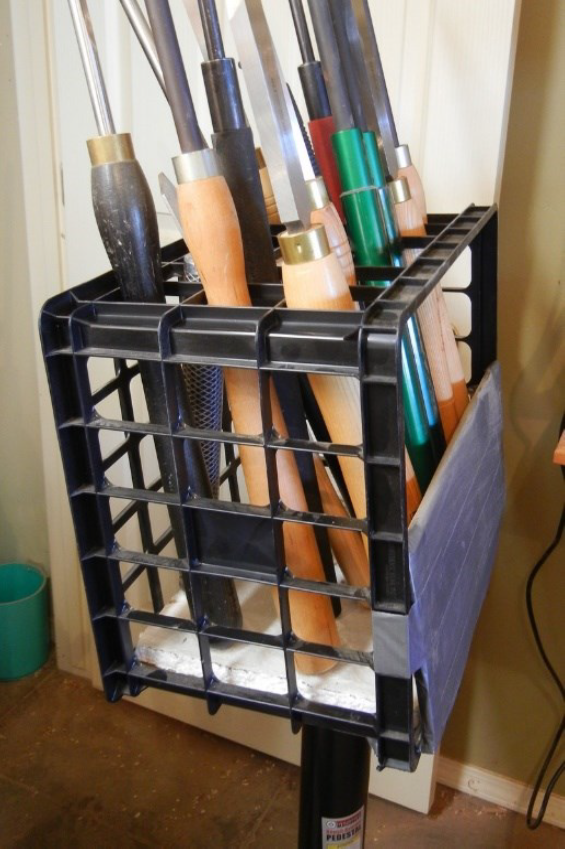
Dick has limited space in his workshop and doesn’t use a lot of tools. He attached a milk crate to a bench grinder pedestal with plastic cable ties. He used cardboard and duct tape along the open edge of the crate to keep the tools from slipping out and Styrofoam on the base to keep them from falling through. The crate is placed on its side and the 3 X 5 hole grid makes room for 15 tools. It tips backward so the gouges lean back. Milk crates are available at stores that sell storage supplies like Target or Walmart. Some grocery stores throw away broken milk crates and may give them away if someone asks for them.
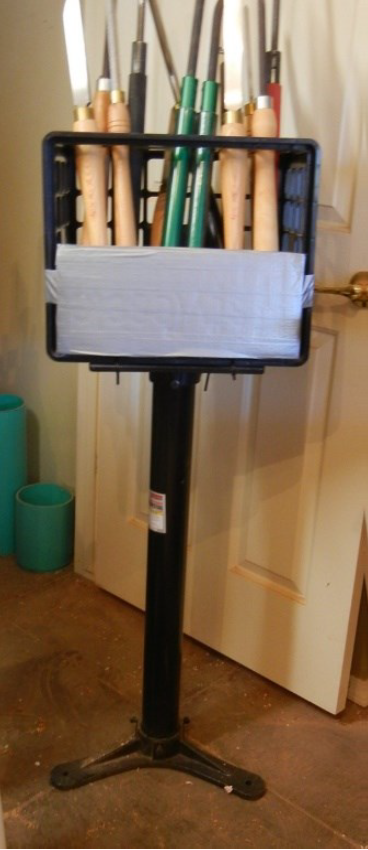
He purchased this tool bench grinder pedestal from Harbor Freight, with current cost being around $50. It’s easy to move and takes little floor space. He’s careful with his arrangement and puts the sharper tools like skews in the back and puts the ones he uses most frequently in the front. The ends of the cable ties that he used to attach the crate to the pedestal can be seen below the crate.
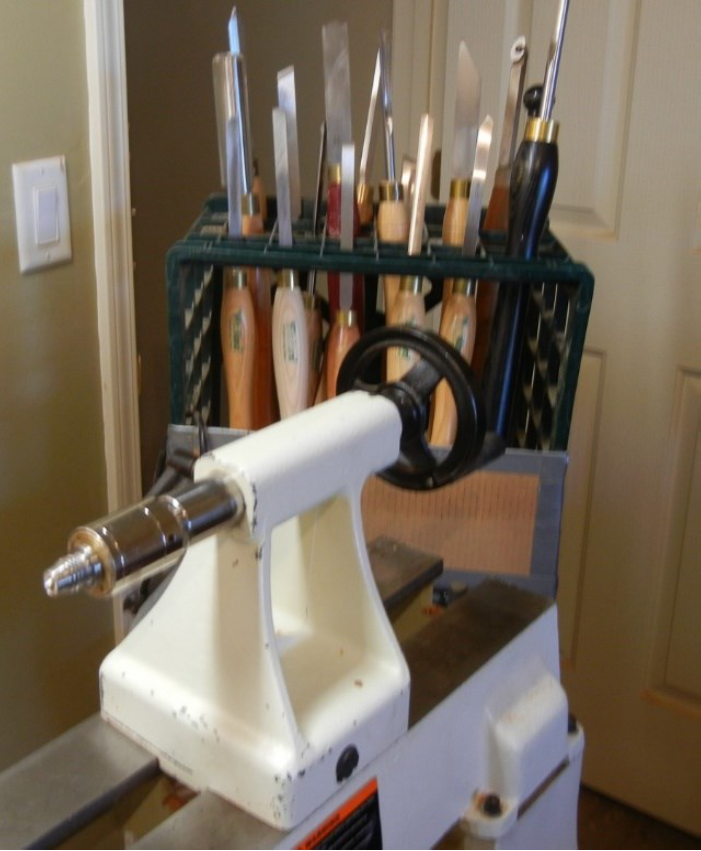
He usually has his tools conveniently placed at the end of his lathe. This photo shows how the tools lean away from the lathe.
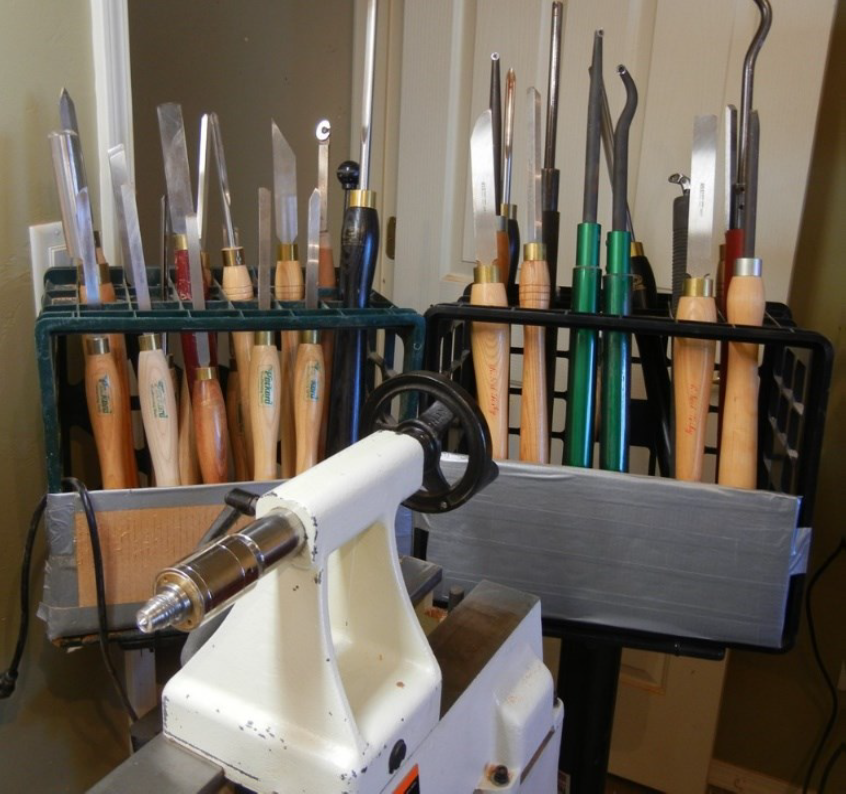
This is his example of placing two tool holders at the base of his lathe and it shows how they only fill a small area of his shop.
Gary Frank
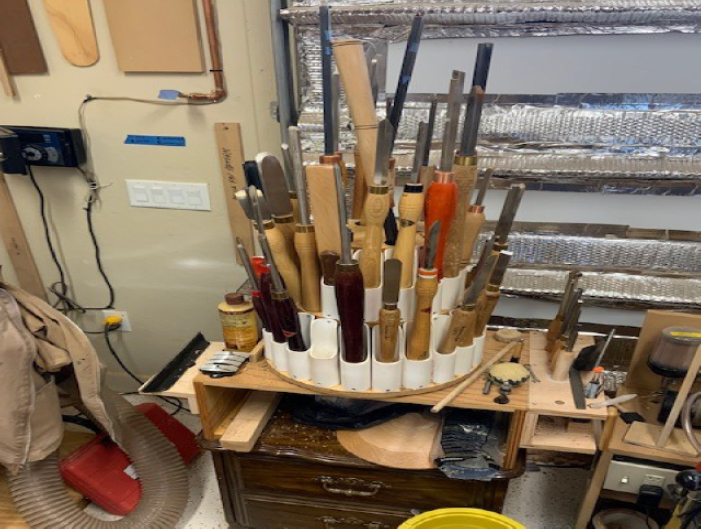
Several members made similar tool holders with Ed Jones and made their own adaptations. Bruce Butler described a similar arrangement that is not on a lazy Susan. It had been clamped onto an old Workmate to which he’d added a 2×4 base with 4 casters to help move it around the shop. He puts the shorter tools in front.
There was a discussion about safety with tools facing up and the sharp edges. Some place shorter ones in front and tall ones in the center. Some place small tools face down so they aren’t reaching across the sharp edges.
Doug Rowe
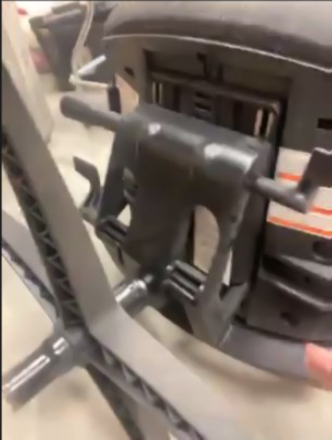
Doug removed the base from an old office chair to make the rolling base for his tool storage unit. Due to the tilt of the chair base, he used shims to get it level before attaching a plywood base to hold his gouges. It had 5 legs, which makes it more stable when rolling it around the shop. He learned this idea from Mike Peace, who presents some of his ideas on online. Habitat for Humanity often has inexpensive office chairs for sale.

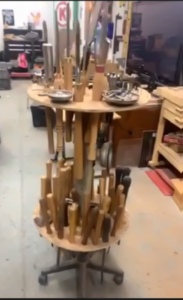
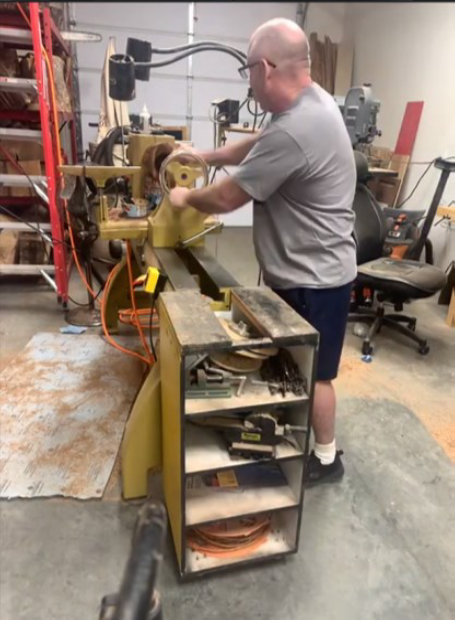
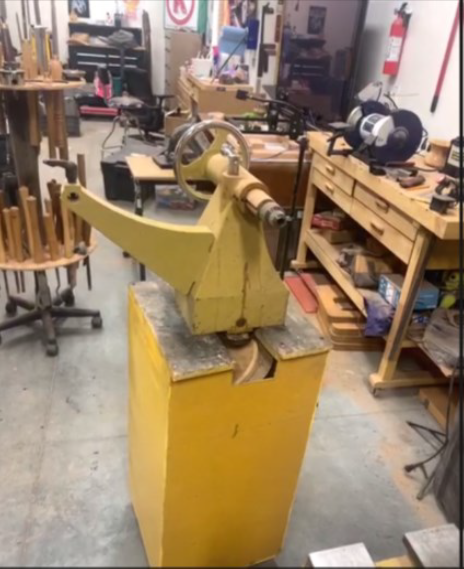
This is a view of the cabinet from another angle after the tailstock has been moved onto it.
Ken Allen
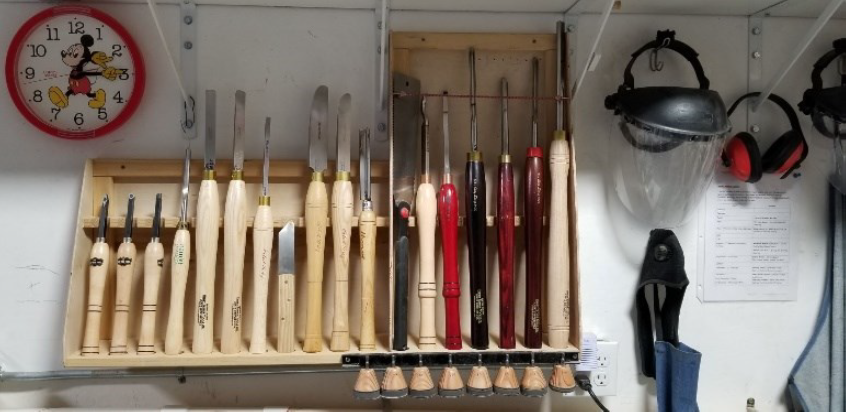
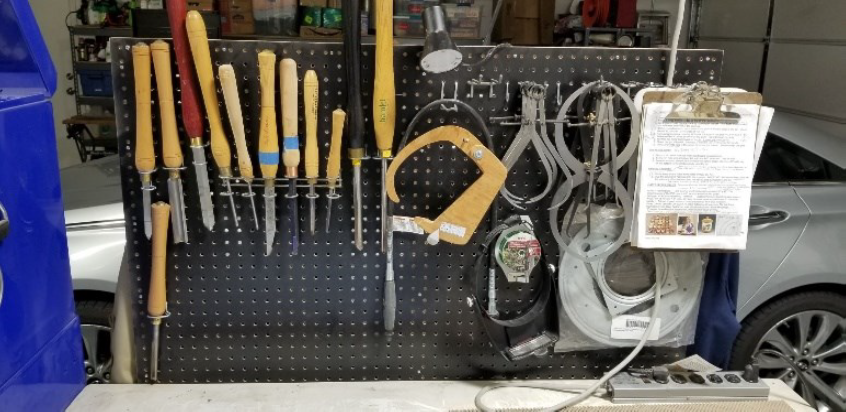
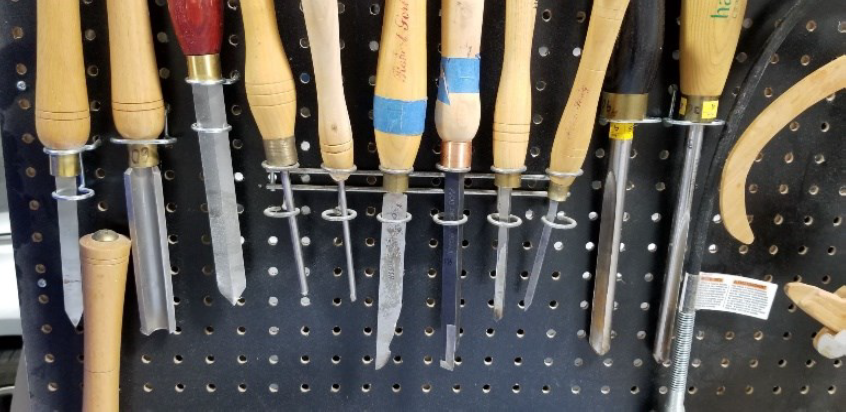
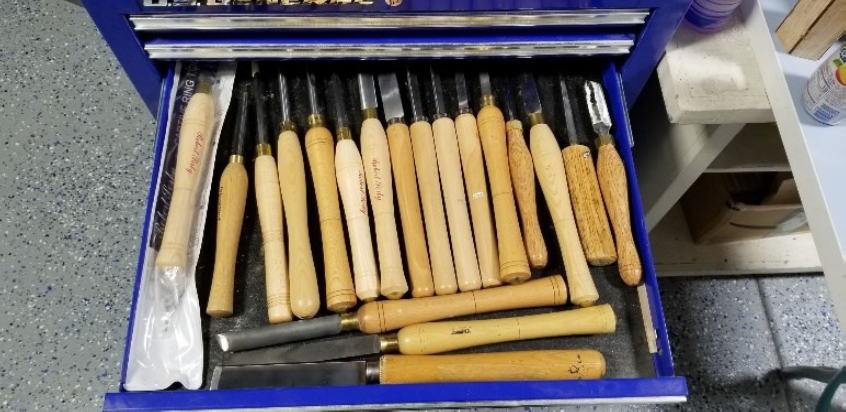
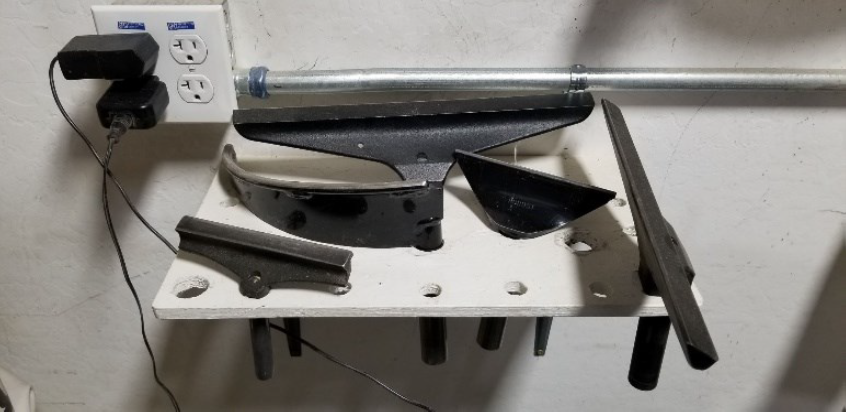
Dave Madden said he’s made a long metal tool rest holder along his wall for the 20-30 tool rests he’s made. A discussion of the benefits of different tool rests focused on how different tool rests, sizes and shapes, help with different projects. The Robust tool rest in the photo is sturdy, short, allows a comfortable hand position and has less vibrations. A safety tip was given: Keeping hands on the turner’s side of the tool rest is the safest. It’s important to develop habits that are safe for your hands.
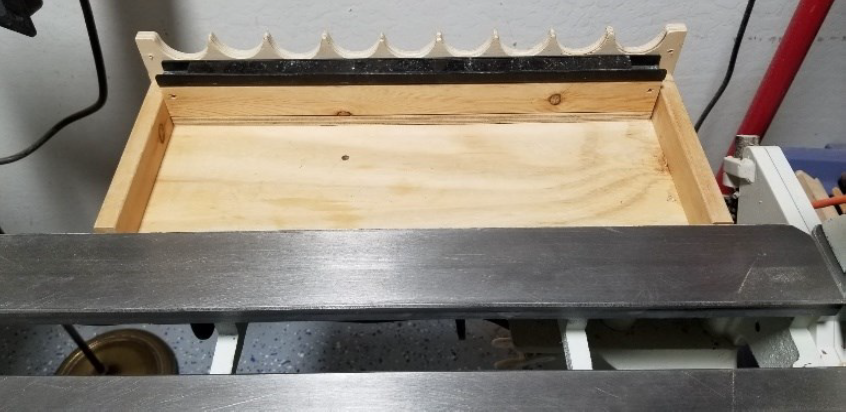
Mark Oglesby

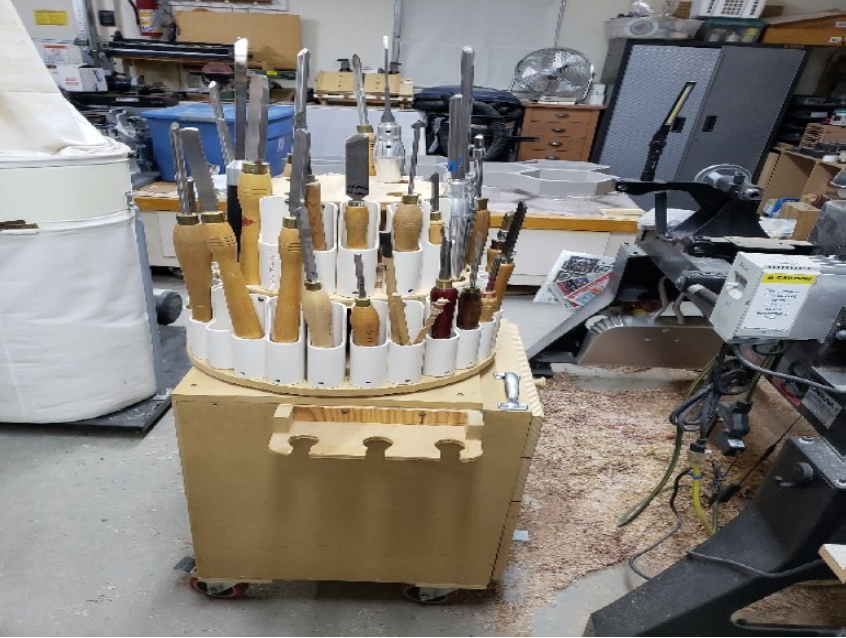
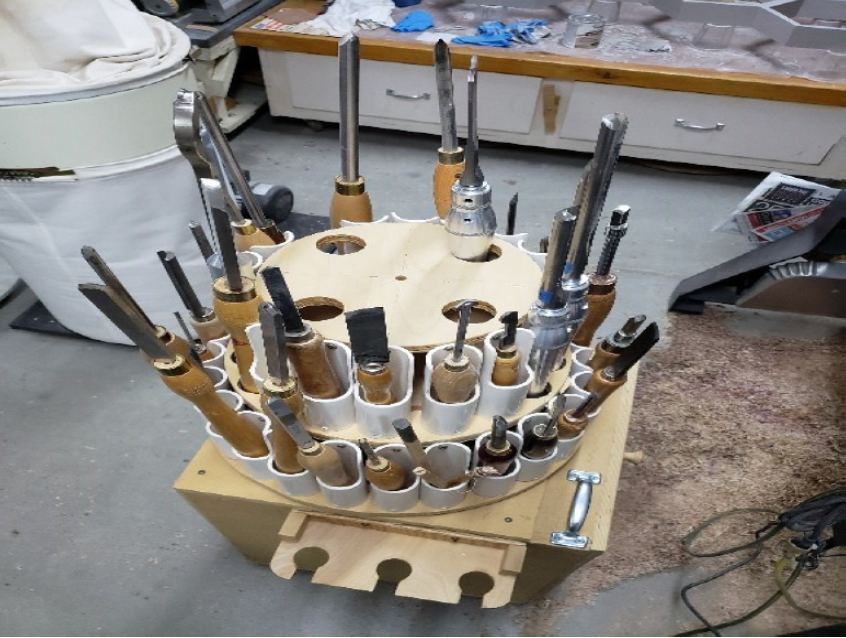
Ric Davis
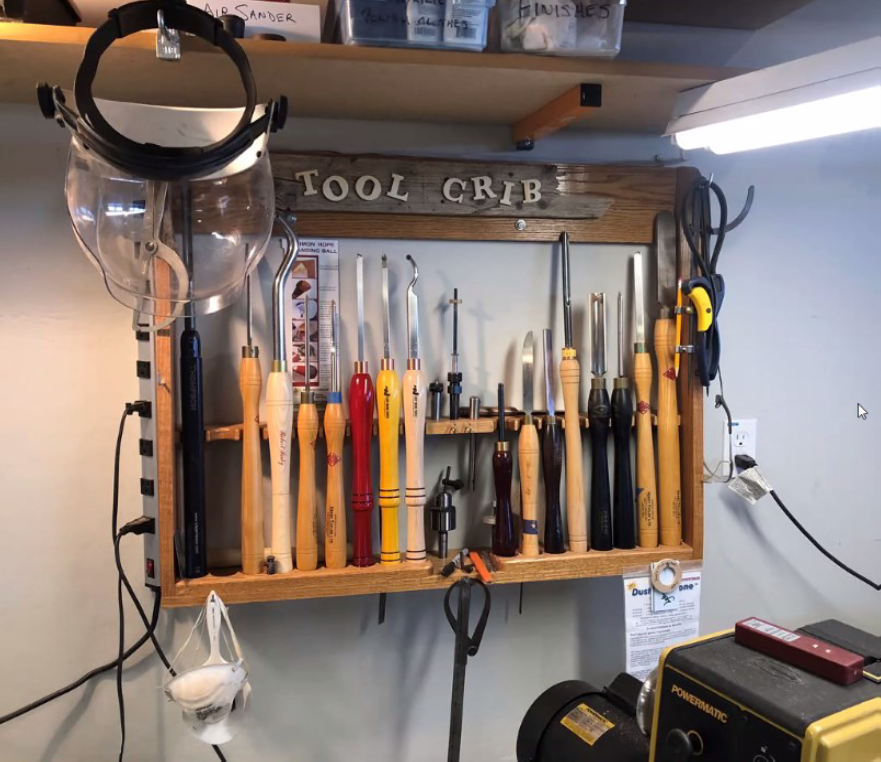
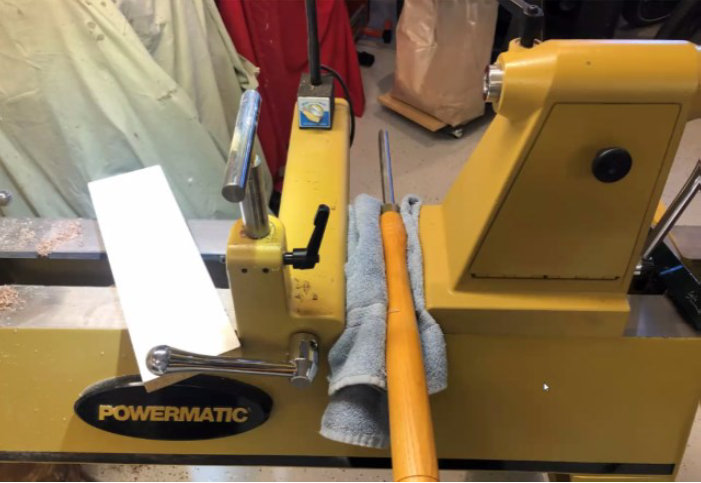
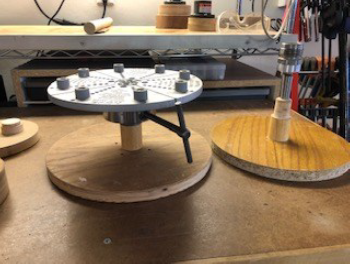
Pete Lang
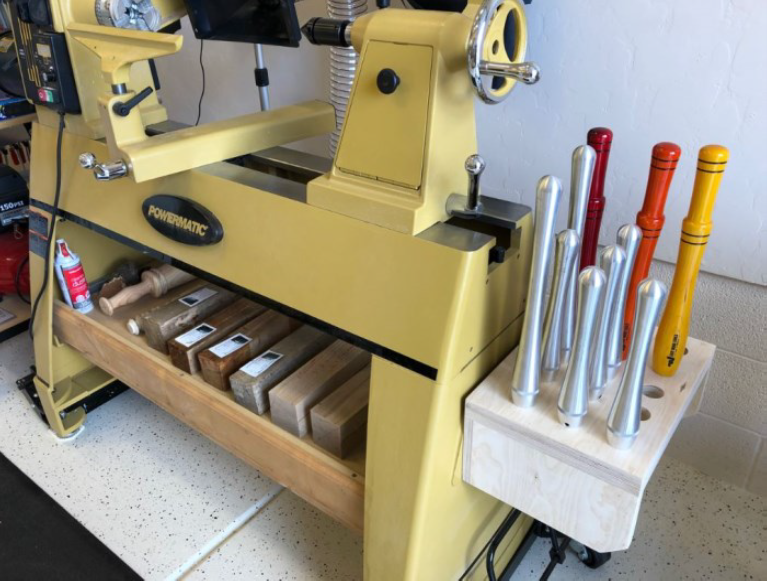
If this is attached to the lathe, it can be in the way of removing the tail stock or can interfere if a ‘swing away’ were added. Several members said the ‘swing away’ (~$350-375) is well worth the cost since it’s easier on a woodturner’s back.